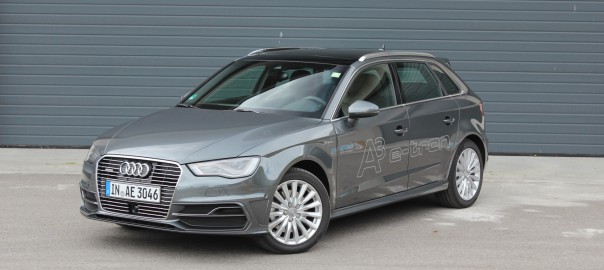Plug-in hybrids like the 2016 Audi A3 e-tron — especially those with well-tuned responses and zippy performance — are the evangelists that have the best chance of converting the masses to the joys of all-electric motoring.
Yes, electric-car fans, please set aside your all-the-way-or-nothing thinking for the moment. On one side, the A3 e-tron preaches to that inherent goodness, and serves as a stopgap solution, with limited EV range, until battery cost and packaging hurdles are overcome. On the other hand, even after you’ve used up your electric range and the gasoline engine starts up, the e-tron remains a cheerleader for how hybrids can be made more efficient—and even more fun to drive—with bigger batteries and stronger electric ‘boost.’
The production A3 e-tron, slated to reach the U.S. market next summer, is more of the latter. After several stints of driving with the e-tron—in final Euro-spec, and close to what we’ll see in the U.S.—earlier this month, in portions of three days and a drive from Vienna to Munich, over narrow, undulating Austrian and German back roads, larger two-lane highways, and some motorway time—we can say that it feels as if Audi has put forth tremendous effort into making the e-tron drive like a normal gasoline (or diesel) car.
And it might just be the best-handling (or best-balanced) model in the A3 lineup—certainly so if you only consider Audi’s front-wheel-drive cars.
More fun to drive than any other plug-in hybrid
To take it a step further, up against every other plug-in hybrid and range-extended EV on the market—or at least, those with a price tag lower than EV enthusiasts’ Holy Grail, the Tesla Model S—the e-tron is simply more fun to drive.
How can this be? In part, it’s a matter of weight. Because the battery pack and additional hybrid hardware add about 300 pounds of additional curb weight (the battery weighs just 276 pounds)—and by giving it aluminum fenders and hood and some other weight-saving measures, Audi’s kept this complex plug-in hybrid’s total curb weight at just under 3,400 pounds. That’s less than 400 pounds heavier than the base 1.8-liter A3, and roughly the same weight as a 2.0T quattro A3—an incredible feat, really. Furthermore, it’s that battery pack that makes the weight distribution more balanced (at 55/45 biased to the front, instead of up to 60/40 for some A3 models).
Read more: Green Car Reports
